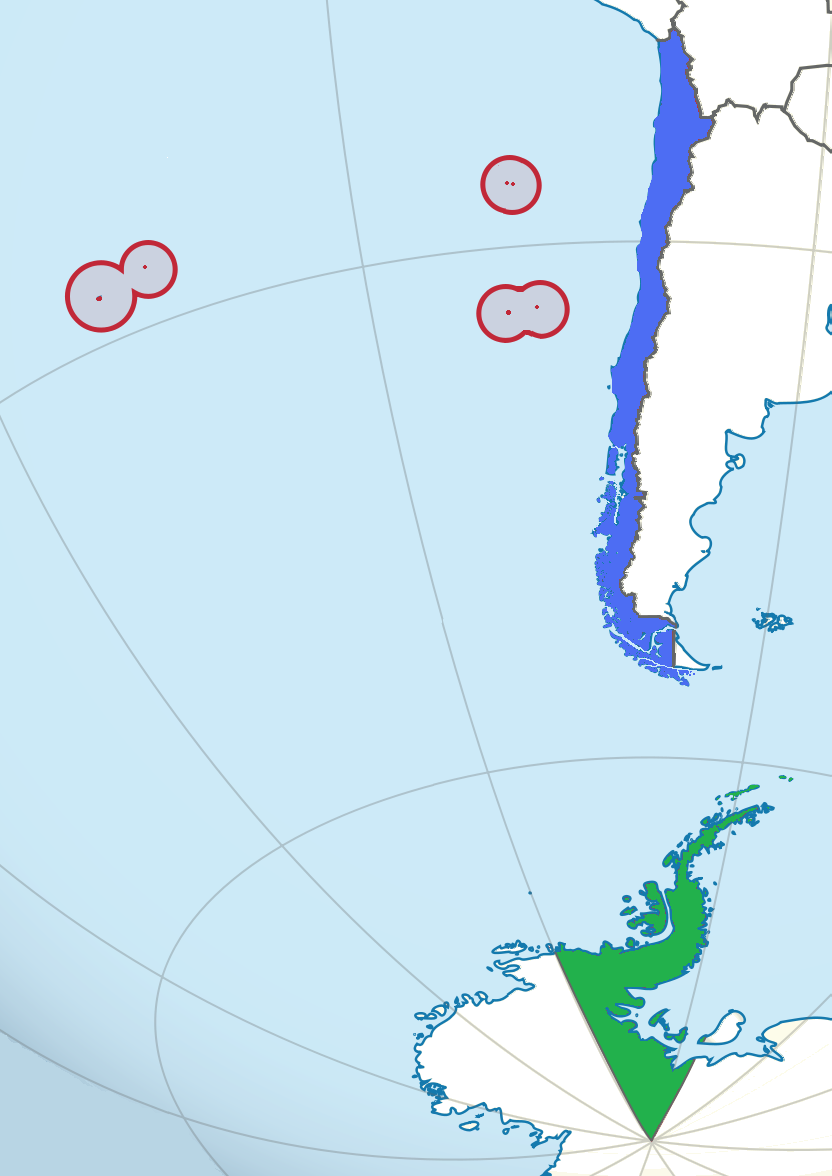|
Udea Tetragramma
''Udea tetragramma'' is a species of moth in the subfamily Spilomelinae of the family Crambidae. It was described by John Frederick Gates Clarke in 1965 based on specimens collected on the Juan Fernandez Islands, an archipelago in the South Pacific Ocean and part of Insular Chile. The species is also found on Rapa Nui, where it has been accidentally introduced. The wingspan is 17–18 mm. The forewings are fuscous, strongly overlaid with ferruginous. There is a straight, transverse, ill-defined, fuscous line at two-fifths of the costa, extending to the dorsum at the basal third. From the apical sixth of the costa extends a transverse, ill-defined line to vein 2, then along vein 2 to the cell, then diagonally, outwardly and then straight to the dorsum at the outer two-thirds. There are three small white dots in the cell, preceded and followed by blackish-fuscous scales. There are also four ochreous-tawny spots on the outer half of the costa, alternating with suffused shades of ... [...More Info...] [...Related Items...] OR: [Wikipedia] [Google] [Baidu] |
Moth
Moths are a group of insects that includes all members of the order Lepidoptera that are not Butterfly, butterflies. They were previously classified as suborder Heterocera, but the group is Paraphyly, paraphyletic with respect to butterflies (suborder Rhopalocera) and neither subordinate taxon is used in modern classifications. Moths make up the vast majority of the order. There are approximately 160,000 species of moth, many of which have yet to be described. Most species of moth are nocturnal, although there are also crepuscular and Diurnal animal, diurnal species. Differences between butterflies and moths While the Butterfly, butterflies form a monophyly, monophyletic group, the moths, comprising the rest of the Lepidoptera, do not. Many attempts have been made to group the superfamilies of the Lepidoptera into natural groups, most of which fail because one of the two groups is not monophyletic: Microlepidoptera and Macrolepidoptera, Heterocera and Rhopalocera, Jugatae a ... [...More Info...] [...Related Items...] OR: [Wikipedia] [Google] [Baidu] |
Spilomelinae
Spilomelinae is a very species-rich subfamily of the lepidopteran family Crambidae, the crambid snout moths. With 4,180 described species in 351 genera worldwide, it is the most speciose group among pyraloidea, pyraloids. Description Imagines – the adult life stage – vary considerably in size: the forewing span ranges from 11.5 mm e.g. in ''Metasia'' to 50 mm in the robust-bodied ''Eporidia''. In resting position, the moths exhibit a characteristic triangular shape, with the wings usually folded over the abdomen, the forewings covering the hindwings. Some Spilomelinae diverge from this common resting pattern, like ''Maruca'' with widely spread wings, and ''Atomopteryx'' and ''Lineodes'' with narrow wings folded along the body. All Spilomelinae moths have well-developed Insect morphology#Compound eyes and ocelli, compound eyes, Insect morphology#Antennae, antennae and Insect mouthparts, mouthparts, although in the genera ''Niphopyralis'' and ''Siga'' the proboscis i ... [...More Info...] [...Related Items...] OR: [Wikipedia] [Google] [Baidu] |
Crambidae
Crambidae comprises the grass moth family of lepidopterans. They are variable in appearance, with the nominal subfamily Crambinae (grass moths) taking up closely folded postures on grass stems where they are inconspicuous, while other subfamilies include brightly coloured and patterned insects that rest in wing-spread attitudes. In many classifications, the Crambidae have been treated as a subfamily of the Pyralidae or snout moths. The principal difference is a structure in the tympanal organs called the praecinctorium, which joins two tympanic membranes in the Crambidae, and is absent from the Pyralidae. The latest review by Munroe and Solis, in Kristensen (1999), retains the Crambidae as a full family. The family currently comprises 15 subfamilies with altogether 10,347 species in over 1,000 genera. Systematics *subfamilia incertae sedis **''Conotalis'' Hampson, 1919 **''Exsilirarcha'' Salmon & Bradley, 1956 *Subfamily Acentropinae Stephens, 1836 *Subfamily Crambinae Latre ... [...More Info...] [...Related Items...] OR: [Wikipedia] [Google] [Baidu] |
Juan Fernandez Islands
''Juan'' is a given name, the Spanish and Manx versions of ''John''. The name is of Hebrew origin and has the meaning "God has been gracious." It is very common in Spain and in other Spanish-speaking countries around the world and in the Philippines, and also in the Isle of Man (pronounced differently). The name is becoming popular around the world and can be pronounced differently according that region. In Spanish, the diminutive form (equivalent to ''Johnny'') is , with feminine form (comparable to ''Jane'', ''Joan'', or ''Joanna'') , and feminine diminutive (equivalent to ''Janet'', ''Janey'', ''Joanie'', etc.). Chinese terms * ( or 娟, 隽) 'beautiful, graceful' is a common given name for Chinese women. * () The Chinese character 卷, which in Mandarin is almost homophonic with the characters for the female name, is a division of a traditional Chinese manuscript or book and can be translated as 'fascicle', 'scroll', 'chapter', or 'volume'. Notable people * Juan ( ... [...More Info...] [...Related Items...] OR: [Wikipedia] [Google] [Baidu] |
Insular Chile
Insular Chile, also called ''Las islas Esporádicas'', or "the Sporadic Islands", is a scattered group of oceanic islands of volcanic origin located in the South Pacific, and which are under the sovereignty of Chile. The islands lie on the Nazca Plate, separate from the South American continental plate. Despite not being continental islands, the Juan Fernández Islands and the Desventuradas Islands are considered "Continental Insular Chile"; Salas y Gómez Island and Easter Island (both geographically situated in Polynesia) form the zone known as "Oceanic Insular Chile". All of insular Chile is administrated as part of the Valparaíso Region. History Easter Island was first inhabited by a Polynesian culture known as the Rapa Nui, and the Rapa Nui knew about Salas y Gómez Island during prehistoric times. As such, academics often group them in with Oceania rather than South America. Descendants of the ancient Rapa Nui make up the majority of Easter Island's current popul ... [...More Info...] [...Related Items...] OR: [Wikipedia] [Google] [Baidu] |
Rapa Nui
Easter Island (, ; , ) is an island and special territory of Chile in the southeastern Pacific Ocean, at the southeasternmost point of the Polynesian Triangle in Oceania. The island is renowned for its nearly 1,000 extant monumental statues, called ''moai'', which were created by the early Rapa Nui people. In 1995, UNESCO named Easter Island a World Heritage Site, with much of the island protected within Rapa Nui National Park. Experts differ on when the island's Polynesian inhabitants first reached the island. While many in the research community cited evidence that they arrived around the year 800, a 2007 study provided compelling evidence suggesting their arrival was closer to 1200. The inhabitants created a thriving and industrious culture, as evidenced by the island's numerous enormous stone ''moai'' and other artifacts. Land clearing for cultivation and the introduction of the Polynesian rat led to gradual deforestation. By the time of European arrival in 1722, the i ... [...More Info...] [...Related Items...] OR: [Wikipedia] [Google] [Baidu] |
Wingspan
The wingspan (or just span) of a bird or an airplane is the distance from one wingtip to the opposite wingtip. For example, the Boeing 777–200 has a wingspan of , and a wandering albatross (''Diomedea exulans'') caught in 1965 had a wingspan of , the official record for a living bird. The term wingspan, more technically 'extent' , is also used for other winged animals such as pterosaurs, bats, insects, etc., and other aircraft such as ornithopters. In humans, the term wingspan also refers to the arm span, which is the distance between the length from the end of an individual's arm (measured at the fingertips) to the individual's fingertips on the other arm when raised parallel to the ground at shoulder height. Wingspan of aircraft The wingspan of an aircraft is always measured in a straight line, from wingtip to wingtip, regardless of wing shape or sweep. Implications for aircraft design and animal evolution The lift from wings is proportional to their area, so the h ... [...More Info...] [...Related Items...] OR: [Wikipedia] [Google] [Baidu] |
Mnesictena
''Mnesictena'' is a genus of snout moths in the subfamily Spilomelinae, where it is placed in the tribe Udeini. The genus was erected by the English entomologist Edward Meyrick in 1884. The currently known seven species are exclusively found on New Zealand and the associated Antipodes Islands and Chatham Islands. In the past, ''Mnesictena'' was included in the genus ''Udea'', but it is currently considered a separate genus. The caterpillars feed on different plants, with ''Mnesictena flavidalis'' being recorded from '' Muehlenbeckia'' (Polygonaceae), ''M. daiclesalis'' from '' Veronica macrocarpa'' (Plantaginaceae), and ''M. notata'' as well as ''M. marmarina'' from ''Urtica'', the latter also from '' Australina''. Species *'' Mnesictena adversa'' (Philpott, 1917), distributed on New Zealand *'' Mnesictena antipodea'' (Salmon in Salmon & Bradley, 1956), distributed on the SE Antipodes Island *'' Mnesictena daiclesalis'' (Walker, 1859), distributed on New Zealand *'' Mnesictena ... [...More Info...] [...Related Items...] OR: [Wikipedia] [Google] [Baidu] |
Udea
''Udea'' is a genus of snout moths in the subfamily Spilomelinae of the family Crambidae. The genus was erected by Achille Guenée in 1845. The currently known 216 species are present on all continents except Antarctica. About 41 species are native to Hawaii. Systematics The genus is placed in the tribe Udeini, where it is closest related to the genera '' Mnesictena'', '' Deana'' and '' Udeoides''. In the past, ''Mnesictena'' was included in ''Udea'', but it is currently considered a separate genus comprising seven species. The North American, European and African ''Udea'' species have been treated in several studies, and a number of species groups has been proposed (see below). Species ''Udea ferrugalis'' species group: *''Udea accolalis'' (Zeller, 1867) *''Udea azorensis'' Meyer, Nuss & Speidel, 1997 *''Udea delineatalis'' (Walker in Melliss, 1875) *''Udea exigualis'' (Wileman, 1911) *''Udea ferrugalis'' (Hübner, 1796) *''Udea heterodoxa'' (Meyrick, 1899) *''Udea ki ... [...More Info...] [...Related Items...] OR: [Wikipedia] [Google] [Baidu] |





